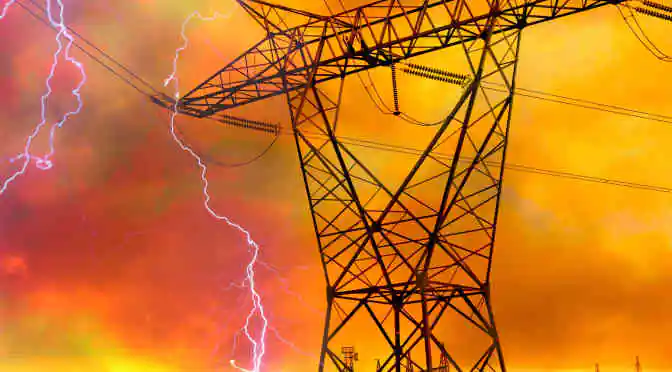For an industry which is not new to uncertainties, frequent changes, fluctuations, and disruptions, have turned to being the new ‘normal’ in the energy sector. Energy management, and more so optimization of the energy management strategies, has never invited so much of debate and discussion before. And therefore, it becomes even more interesting to analyze the frameworks of energy monitoring systems which aim to enable sustainable energy management solutions.
Making sense of the chaos – Deciphering the disruptions
Thanikachalam Chandrasekharan, our lead analyst in the energy sector, believes that it is the present trends which turn into future harbingers of major disruptions in the energy sector. The best way to be fully equipped to turn the disruptions to one’s advantage is by analyzing the chaos created by the barrage of trends and building a strategy accordingly. For instance, the five vital trends which our latest reports predict and expect to act as major disrupting factors are:
#Trend 1: Generation of wind and solar energy to almost triple by 2030, yet not amount to even 20% of the global power generation
When it comes to renewable power generation, wind and solar energy have been two areas which every country is investing into. Until recently, investments and lack of resources and technology were the major hurdles which delayed their adoption. But, as the capital costs have come down, and the regional barriers hardly come in to play, the generation of solar and wind energy is all set to record a major spike.
#Trend 2: Huge demand for oil by 2030, with shale gas from US playing the role of a significant change
Just like in the case of wind and solar energy, there was a time when shale gas production was highly cost-intensive and the latter was not a commercially viable product. Therefore, despite it being one of the best substitutes for fossil fuels, manufacturers found it hard to go full-fledged with shale gas production. But, it is predicted that in the upcoming years, the breakeven cost will eventually come down. Especially in the US, manufacturers are working towards making the most of this scenario and are building strategies on how to commercialize shale gas to make the growing demand for oil work to their advantage.
#Trend 3: Smart grids to turn smarter
 For renewable energy to bring in fruitful results, it is important that smart-grid solutions are in place so that the erratic nature of the wind and solar power does not affect the power generation plan. Thanikachalam Chandrasekharan notes that behind every successful adoption of the renewable energy solutions, lies the backbone of a strong smart grid technology. Perhaps this is the reason why major names in the smart grid industry, like ABB, GM, and Eaton, are investing huge amount of capital in grid optimization solutions.
For renewable energy to bring in fruitful results, it is important that smart-grid solutions are in place so that the erratic nature of the wind and solar power does not affect the power generation plan. Thanikachalam Chandrasekharan notes that behind every successful adoption of the renewable energy solutions, lies the backbone of a strong smart grid technology. Perhaps this is the reason why major names in the smart grid industry, like ABB, GM, and Eaton, are investing huge amount of capital in grid optimization solutions.
#Trend 4: Battery technology to be the frontrunner for new technology storage build-out
Any conversation on smart grids is incomplete without taking battery technology into account. Storage is a vital aspect of the smart-grid strategies, and it is in this context that battery technology comes into the picture. Contrary to pumped-storage hydro, battery technology has greater usability. Also, as battery technology can be adapted in several innovative means of energy production, this is one trend which is all set to disrupt the energy sector.
#Trend 5: Major dependency of aviation industry on biofuels
As the aviation industry expands, issues on fuel dependency have resulted in the lookout for alternatives for jet fuels. Till date biofuels seem to be the only substitute for jet fuels. In the upcoming years the demand for biofuels is sure to rise, and this has resulted in the partnership between several aircraft operators and aviation biofuel makers.
Top strategies to optimize energy management plan
It is imperative that the players in the energy industry are well prepared to handle the fluctuating nature of the industry. Some of the best ways through which this can be done are:
a. Building highly flexible and competitive business models
It is high time that stakeholders in the energy sector accept that the upcoming years are the years of major transition for this industry. There will be several new entries as well, and this makes it even more important that one builds business models which are not only aggressively driven towards the market, but are also flexible enough to be altered as and when needed. Flexibility plays a critical role when it comes to a market as unpredictable as the energy industry. Therefore, it is important that strategy makers have a-
- Well defined long-term goal
- A plan to scale their product offerings and work towards risk mitigation
- Clarity on how to handle competition
b. Top-down is not the only way forward
If one considers the effective working of any business plan, a common link would be the extent to which there is exchange of ideas at all the levels. For a forceful strategy building, it is not just the top-down approach which will bring results. Rather, the bottom-up level too plays a rather defining role in painting a clear picture of things. Global outlook with local solutions is perhaps the only way forward. And bottom-up analysis plays an important role in providing a local understanding about the entire scenario.
If the stakeholders can gain a strong hold on local dynamics, this would be a stepping stone for them to diversify at the regional, national, and global level as well. This is especially so in the case of LPG companies.
c. Be prepared for uncertainty
While simple as this might sound, but scenario analysis and prediction should be an integral part of energy management strategies. Scenario analysis facilitates understanding on the robustness of a strategy in an event, based on which further plans can be made for growth and risk aversion.



